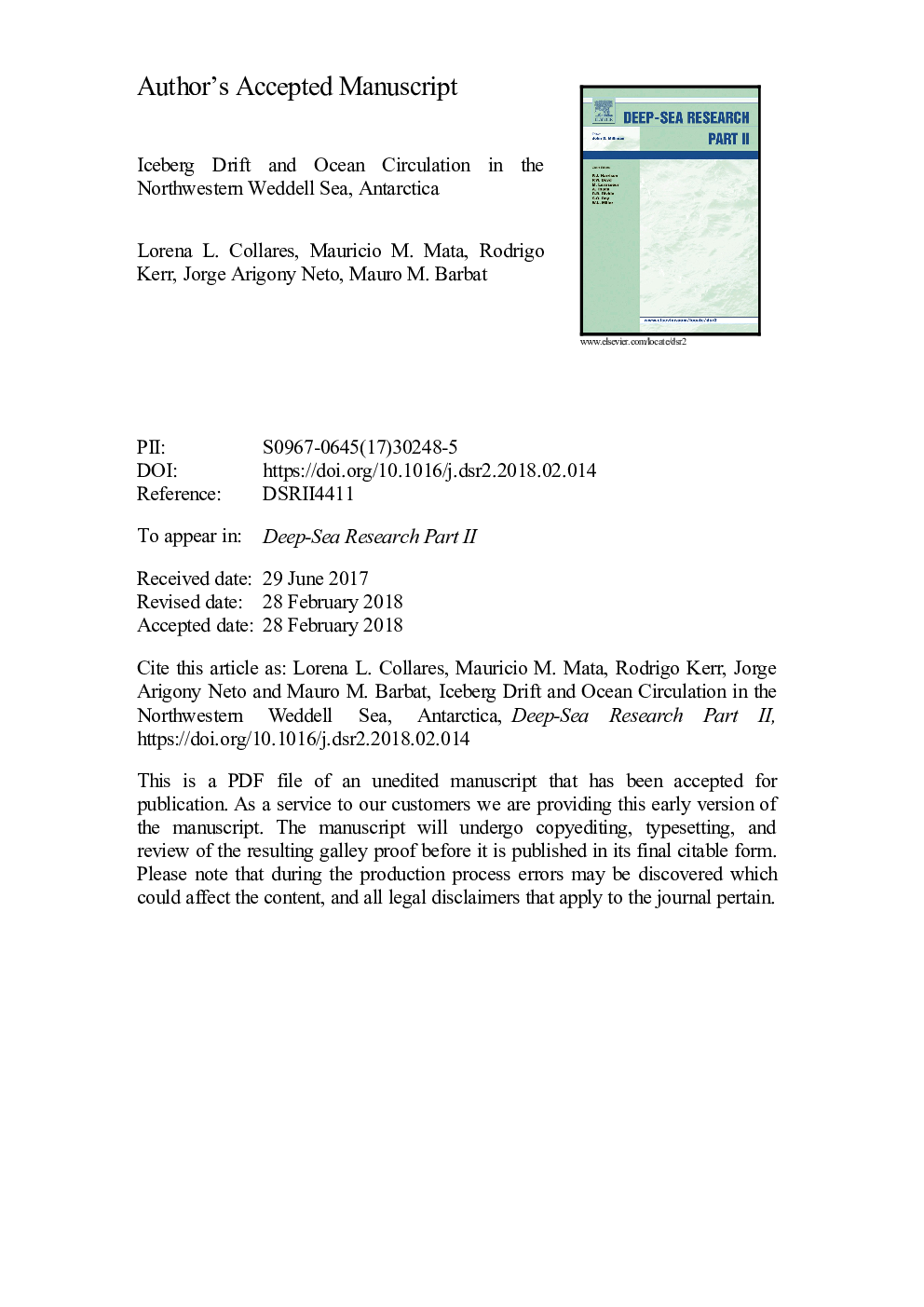| Article ID | Journal | Published Year | Pages | File Type |
|---|---|---|---|---|
| 8884394 | Deep Sea Research Part II: Topical Studies in Oceanography | 2018 | 50 Pages |
Abstract
Icebergs are distinctive features in the Southern Ocean and can influence the physicochemical properties of the ocean environment around them. Their trajectories are influenced by ocean currents, sea ice, bathymetry and wind action. Here, twenty-five icebergs were identified and tracked by applying image classification methods to a series of 142 Advanced Synthetic Aperture Radar (ASAR) images obtained during 2008 and 2009. Tracking these icebergs made it possible to associate the patterns of iceberg drift with the main ocean currents and front systems in this region, including the Antarctic Coastal Current, the Antarctic Slope Front and the Weddell Front. A case study investigated here revealed the recirculation of a Weddell Sea iceberg within the Bransfield Strait in the Northern Antarctic Peninsula as well as its corresponding mass loss starting in the Weddell Sea and extending throughout the monitoring period. The icebergs studied experienced an average disintegration percentage of 21.15% and an average drift speed of 0.22 ± 0.11â¯kmâ¯h-1. The icebergs that drifted at least 500â¯km had an average meltwater injection rate of 62.76 ± 38.27â¯m3 s-1 in the ocean around the Northern Antarctic Peninsula.
Keywords
Related Topics
Physical Sciences and Engineering
Earth and Planetary Sciences
Geology
Authors
Lorena L. Collares, Mauricio M. Mata, Rodrigo Kerr, Jorge Arigony-Neto, Mauro M. Barbat,
